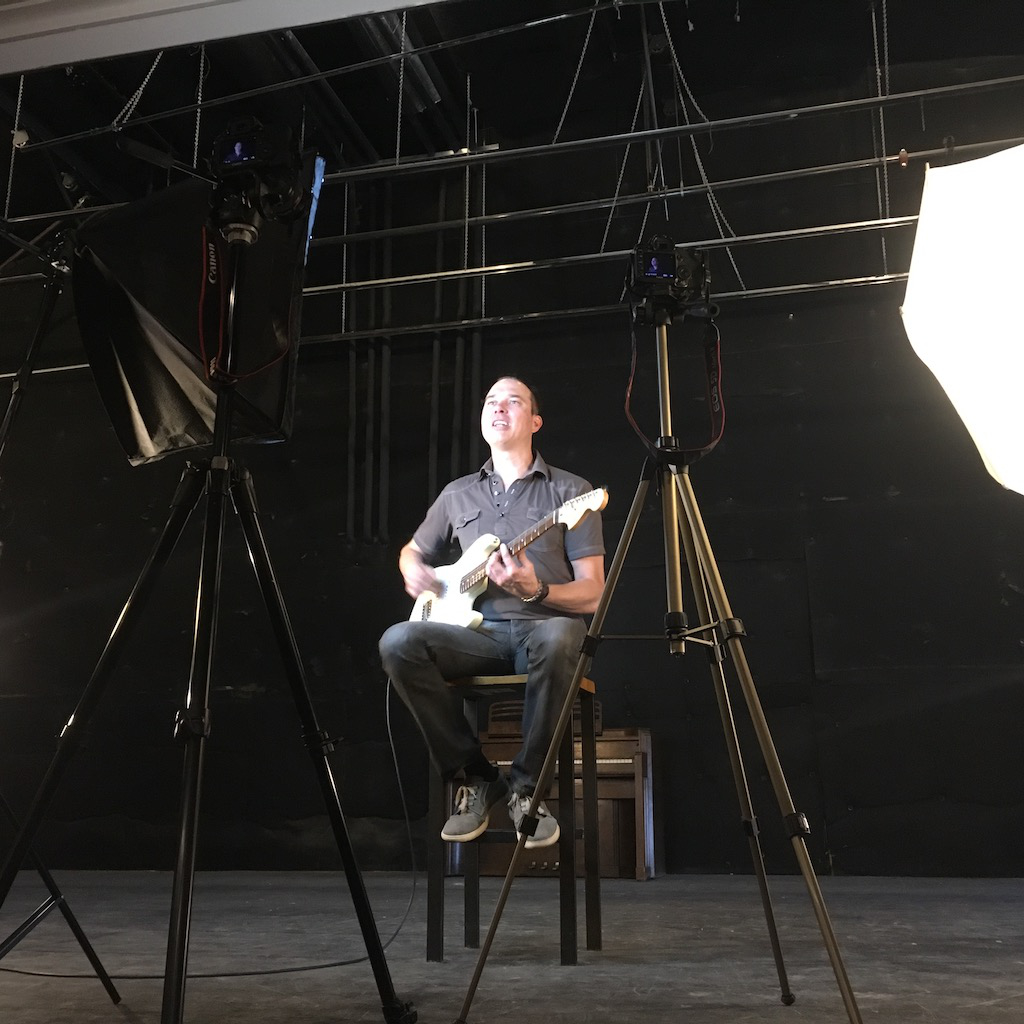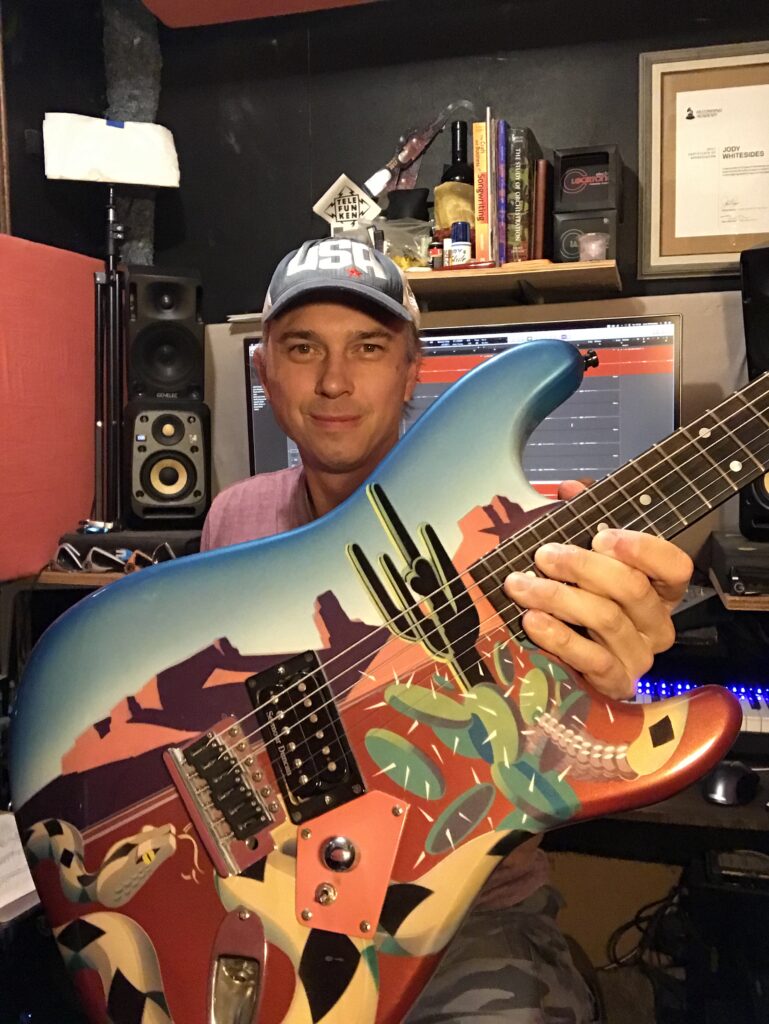As a guitar nerd I tend to spend too much time obsessing over different aspects of the guitar. Sadly there is one particular part of the guitar I never really gave much thought to and that is the volume pots. Generally in the past I would go with the pots installed with the guitar as it was built. At some point I believe it was relayed to me that I should be using 250k volume pots and I stuck with it for no other reason.
Recently I had a guitar volume pot fall apart on me. It was a long on-going process of it dying a weird and terrible death. A death that began when I was asked for my band to play a friend’s birthday party. Where we had to play some very specific cover tunes, and some originals, plus be ok with having some guest players get up and play. One of those guest players was Chet Thompson. A guitar player who had learned to play under the leadership of Randy Rhoads.
For those who aren’t familiar, Randy Rhoads was the guitarist who helped Ozzy break out from under the Black Sabbath banner when Ozzy went solo and released Blizzard of Oz. Then the follow up of Diary of a Madman.
Chet got up and used my guitar to play Crazy Train. Unbeknownst to me, he was a madman on the volume knob. To the point he had worked it so hard that the volume knob came loose in the guitar. I never inspected it closely, but along with working the nut holding it tight in the guitar, it also began the disintegration of the pot itself by slightly bending it apart. It took a good 12 more years for the knob to no longer have a start and stop point. Meaning a month ago it began to spin 360º. Which isn’t a good thing for volume related stuff on a guitar.
Thus began my recent research into replacing the volume knob. What kind should I get. What Ohm value should it be, etc. Then it was off to the Mid Valley Guitar Store to purchase a couple of volume pots for not only my broken one to replace, but to also replace the volume pot in another guitar that I knew to be in need of a change due to having a weird glitch in the taper.
The guitar with the broken volume pot was my Diner guitar. A custom built prototype that generally everyone who plays it, loves it. The 2nd guitar, the one with the weird glitch, is a custom made Strat style guitar.
Once home with the new 500k pots with a linear audio taper, I set to work in removing the old volume pot from the Diner. When I got inside the components compartment and unscrewed, then unsoldered it, I found that it was falling completely apart. There were some wing-flaps that were no longer bent over to hold the pot together. They had straightened out and the back of the volume pot was falling off it. I suppose I could have pushed it together, then bent the tabs back into place and went on my merry way with it. However, the pot in the Diner was a 250k pot. I was replacing it with a 500k pot.
See in the research that I did. I learned that there is a rhyme and reason to why you would use a 250k pot vs a 500k pot. While these rhymes and reasons are general guidelines, they happen for a good reason. Knowing me, I probably threw those reasons to the wind to play counter culture on the guitar front. Which I’ve since learned with this install that I was likely making my guitar playing life harder than it had to be.
The brand new 500k pot went in perfectly. Soldered up like a champ. Then got hidden away behind the compartment door in the back of the guitar.
The custom Strat style guitar had a slightly different issue when I got inside it. The volume pot had a super long threaded neck to it. When I looked up the part online, I found it was an old 250k pot originally put to use as the tone pots for old Gibsons. Hmmm. I definitely don’t recall a conversation with the person that installed it and why that part was used. [side note: it was me and I don’t remember why that pot was used in the first place].
In went the brand new 500k audio taper pot. Much like the one I installed moments earlier in the Diner. The difference here is that the new pot had a much shorter neck to it and I was fearing that it wouldn’t actually allow its nut to tighten down. Fortunately, I got it installed, tightened and soldered on. Boom!
Next up was to plug each guitar in to make sure the pots were soldered correctly and that they were working.
First up the Diner. Plugged in, run thru a TriAxis amp setup and bam, the guitar was sounding great! Plus the volume pot was doing a nice linear taper and not spinning 360º without stopping. Whew. New pot working like a charm.
Next up, the Strat style guitar. Plugged in, also run the TriAxis setup and hotdiggity, the guitar also sounding great!
Why did I go with 500k pots in both of these guitars over the 250k’s that were in each previously? The first answer is, both guitars are sporting humbuckers for pickups. You can use 250k pots for humbucking pickups, though general wisdom promotes only using 250k pots for single coil pickups. The Diner has a single humbucker in bridge position, nothing else. The humbucker pickup, and a volume knob – simple. Done!
The Strat style has a humbucker in the bridge, plus a stacked humbucker in the neck position (stacked meaning it looks like a single coil but is one on top of the other as a humbucker). Thus it too was looking for a 500k pot. As I mentioned it previously had a 250k tone pot from the Gibson line. Tone & volume pots are the same thing. They do the same thing yet for very different results.
Like the Diner, the Strat style got a 500k pot and when I tried the volume ride on it – damn it was smooth. No glitches and a real nice vibe to how it now worked. Same with the Diner.
Being such a nerd for guitar tone, I’m kicking myself for not having thought of switching out the volume pots for decades. Oops. Lesson learned. While I know how to buck trends, going forward I will delight in experimenting with pots before finalizing the guitar build.
What does all this mean as a guitar player?
Well, now my amps aren’t dying in the middle of volume rides on these guitars. Which means I will be going thru a few other guitars to find out if they need their pots replaced with 500k pots. As almost all my guitars have humbuckers over single coil setups. Thus they should have the 500k pots. In terms of playability, I’m noticing that due to the smoother nature of the volume performance, I can tell it will make playing easier to control and manipulate. I won’t be feeling like I’m fighting the guitar. That right there is the biggest reason that I’m happy with the switch.
It will make the guitars feel more responsive in a more predictable way and that makes it easier to experiment with creating new sonic scapes with guitars. And therein is a means to an end for guitar playing joy!




